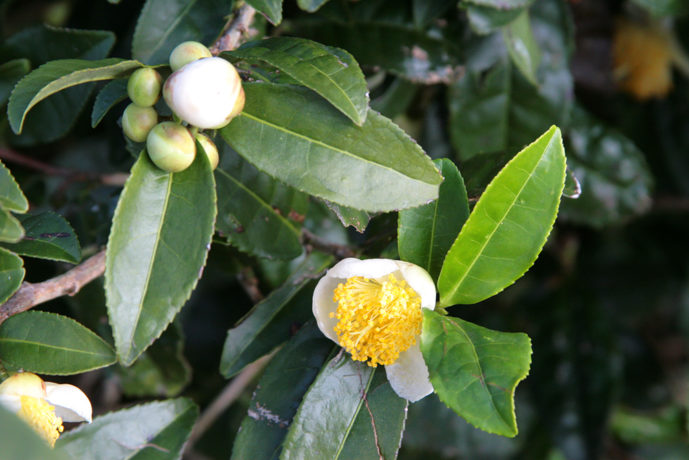Kagoshima Tea
 When Mary Lou visited Kagoshima City and Prefecture, Japan in November 2012 she found a premier tea growing region blessed with mild weather, abundant sun, rain, rich fertile soil and a method of tea cultivation that is different from that in the other regions of Japan that we have visited.
When Mary Lou visited Kagoshima City and Prefecture, Japan in November 2012 she found a premier tea growing region blessed with mild weather, abundant sun, rain, rich fertile soil and a method of tea cultivation that is different from that in the other regions of Japan that we have visited.
 Here, large, expansive tea fields lay like a green carpet across large and small swatches of land. Mountains can be seen both near and far, depending on the location of the tea gardens, and, closer to Kagoshima City, an active volcano Sakurajima looms over the land. Kagoshima City is known as the ‘southern gateway’ to Japan. Kagoshima Prefecture is Japan’s second largest tea-producing region ( after Shizuoka Prefecture ) and produces a highly-anticipated crop of Shincha – the first of the 1st-plucked teas, each spring. Kagoshima tea is not widely known in the USA, so Mary Lou was especially excited to visit this premier tea growing area.
Here, large, expansive tea fields lay like a green carpet across large and small swatches of land. Mountains can be seen both near and far, depending on the location of the tea gardens, and, closer to Kagoshima City, an active volcano Sakurajima looms over the land. Kagoshima City is known as the ‘southern gateway’ to Japan. Kagoshima Prefecture is Japan’s second largest tea-producing region ( after Shizuoka Prefecture ) and produces a highly-anticipated crop of Shincha – the first of the 1st-plucked teas, each spring. Kagoshima tea is not widely known in the USA, so Mary Lou was especially excited to visit this premier tea growing area.
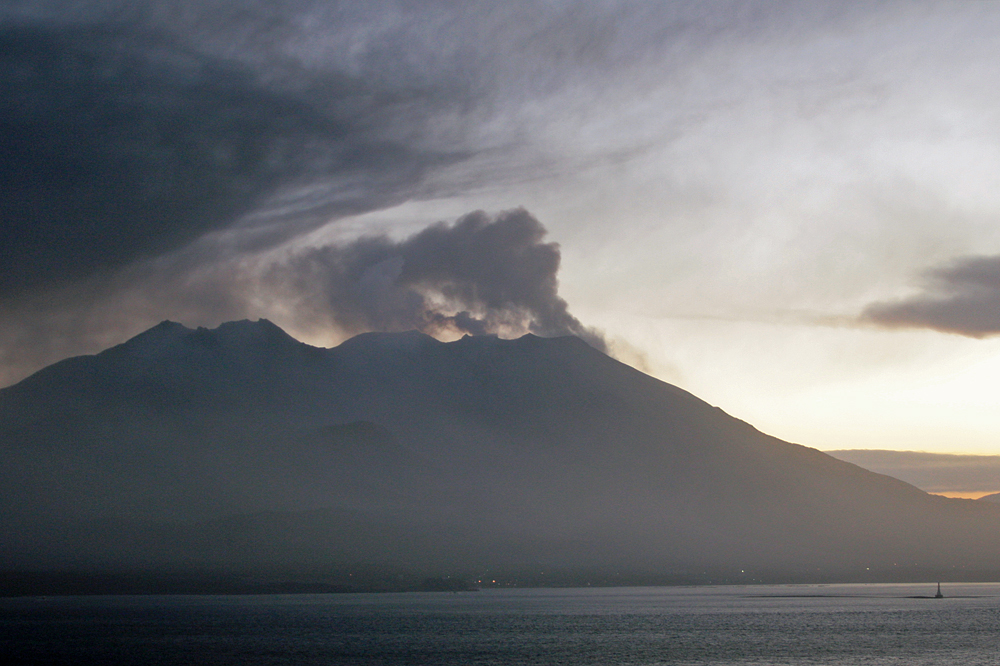
 The landmass of Kagoshima Prefecture, part of the island of Kyushu, consists of two peninsulas – Satsumi and Osum – and 200 small islands. The cool ocean and bay breezes that criss-cross the land are good for coddling tea bushes, as is, I am told, the volcanic ash that adds to the fertile soil composition in this tea growing region.
Because of the large amount of sunshine, and due to the fact that most of the tea gardens are large and wide open without natural shade cover, Kagoshima tea farmers tend to shade their tea bushes for a certain amount of time before the leaf is harvested. Shading alters the natural ratio of chlorophyll in the tea bushes and encourages the leaf to produce more amino acids. This affects the ‘sweetness’ in the fresh tea.
The landmass of Kagoshima Prefecture, part of the island of Kyushu, consists of two peninsulas – Satsumi and Osum – and 200 small islands. The cool ocean and bay breezes that criss-cross the land are good for coddling tea bushes, as is, I am told, the volcanic ash that adds to the fertile soil composition in this tea growing region.
Because of the large amount of sunshine, and due to the fact that most of the tea gardens are large and wide open without natural shade cover, Kagoshima tea farmers tend to shade their tea bushes for a certain amount of time before the leaf is harvested. Shading alters the natural ratio of chlorophyll in the tea bushes and encourages the leaf to produce more amino acids. This affects the ‘sweetness’ in the fresh tea.
 Shade covered or shade-grown tea is not unique here, but in other regions of Japan it is only certain teas, such as Gyokuro and the leaf grown for Matcha, that are shade covered. So it is unusual that close-to-all Kagoshima green sencha teas are grown this way. The covering for sencha remains on the rows of tea plants for one week – and for teas that are sold as kabusecha (fully shaded tea) it is left on for two weeks.
Kagoshima teas have distinctive, full-bodied flavors which we like very much. Different varieties of tea bushes are cultivated in Kagoshima, which also contributes to the unique flavors of these aromatic and crisp teas.
Many tea gardens in south central Kagoshima are characterized as large-scale farming operations, at which riding-cutting machines pass over the rows of tea plants and cut the leaf. This was the first time that I had an opportunity to view one of these riding-cutting machines in operation, and they are impressive! Most fresh leaf in Japan is sheared by some type of machine cutter, but prior to this I had only seen the hand-held machines in use. These are awesome and get the job done very quickly. Some producers pick tea by hand, but for many tea farmers it is easier to sell their fresh leaf to a tea factory than it is to do all the steps of tea production by oneself.
Shade covered or shade-grown tea is not unique here, but in other regions of Japan it is only certain teas, such as Gyokuro and the leaf grown for Matcha, that are shade covered. So it is unusual that close-to-all Kagoshima green sencha teas are grown this way. The covering for sencha remains on the rows of tea plants for one week – and for teas that are sold as kabusecha (fully shaded tea) it is left on for two weeks.
Kagoshima teas have distinctive, full-bodied flavors which we like very much. Different varieties of tea bushes are cultivated in Kagoshima, which also contributes to the unique flavors of these aromatic and crisp teas.
Many tea gardens in south central Kagoshima are characterized as large-scale farming operations, at which riding-cutting machines pass over the rows of tea plants and cut the leaf. This was the first time that I had an opportunity to view one of these riding-cutting machines in operation, and they are impressive! Most fresh leaf in Japan is sheared by some type of machine cutter, but prior to this I had only seen the hand-held machines in use. These are awesome and get the job done very quickly. Some producers pick tea by hand, but for many tea farmers it is easier to sell their fresh leaf to a tea factory than it is to do all the steps of tea production by oneself.
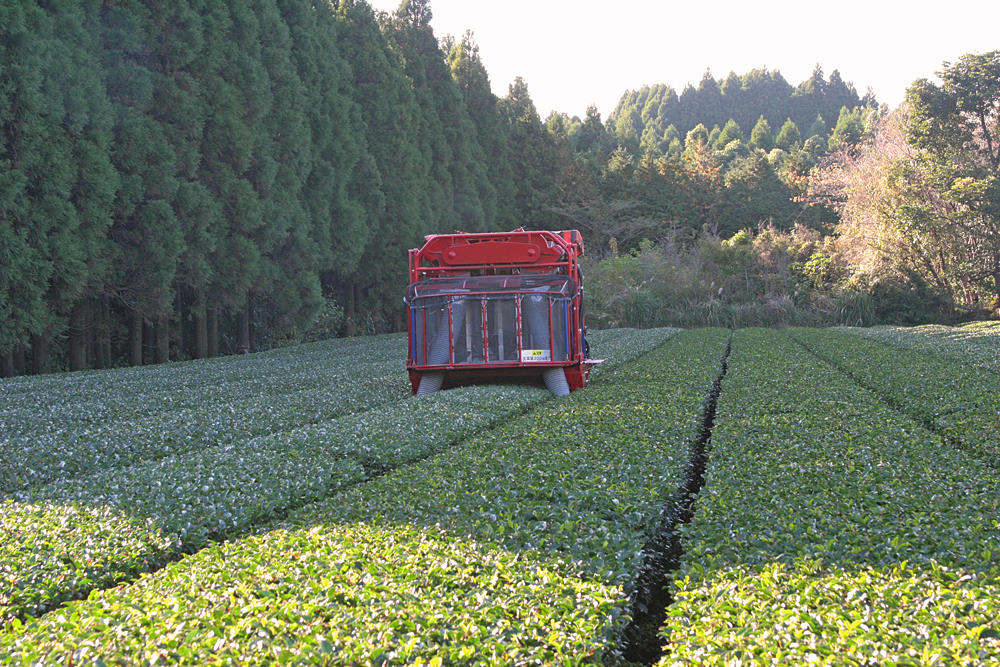
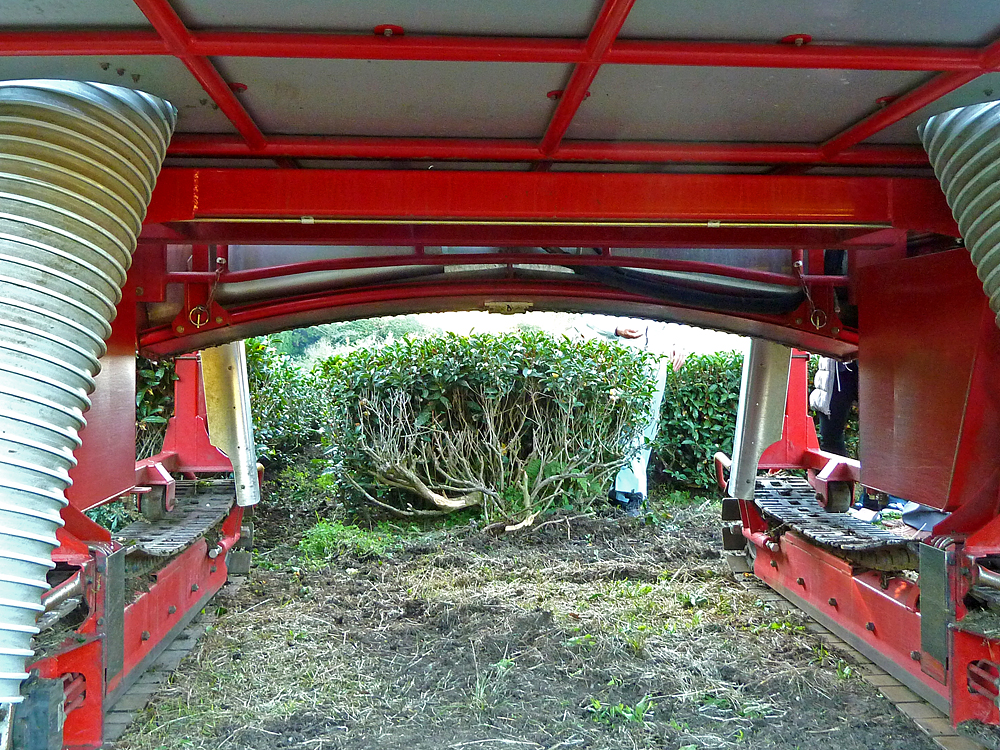 Space is left between the rows so that the machine can drive over the rows of tea bushes. Here is an image looking underneath one of these machines and towards the first tea bush in the row that it is headed for. Watch out and get out of the way !!
Kagoshima has three distinct production zones for tea, each of which yields a different tea. Each zone has characteristic terroir that brings a different style of tea to market.
Space is left between the rows so that the machine can drive over the rows of tea bushes. Here is an image looking underneath one of these machines and towards the first tea bush in the row that it is headed for. Watch out and get out of the way !!
Kagoshima has three distinct production zones for tea, each of which yields a different tea. Each zone has characteristic terroir that brings a different style of tea to market.
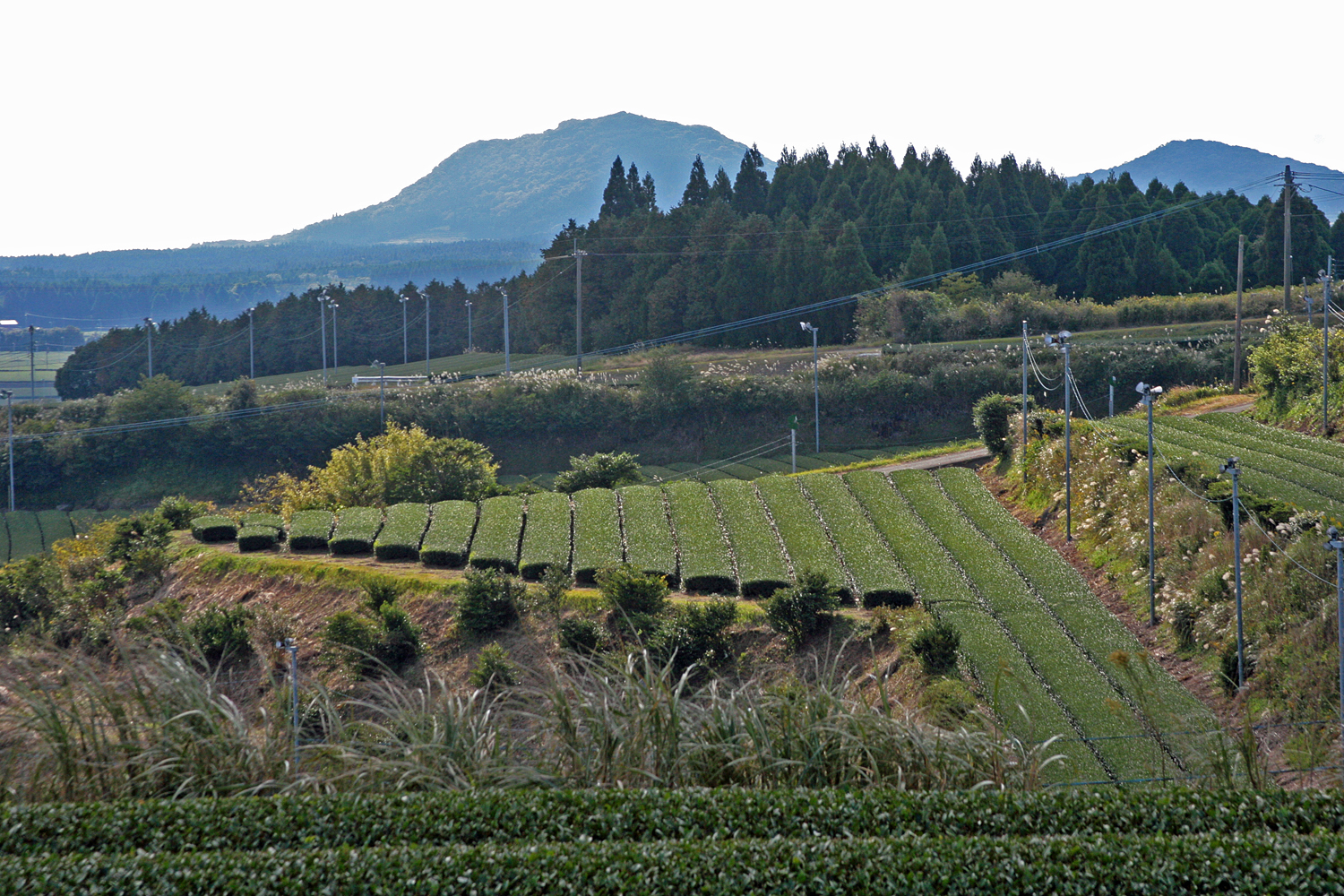
- the warm/early zone along the southern coast brings the first spring tea – Hashiri Shincha – to market.
- the flatland farming zone in south/central Kagoshima is where the largest tea gardens are located and where one can see the riding-cutter machines in action.
- the sloped foothills zone is in the north-central area of Kagoshima. Here, mountain valleys, foothills, and river basin areas have cooler temperatures which maintain the perfect conditions for small, individual tea gardens.

